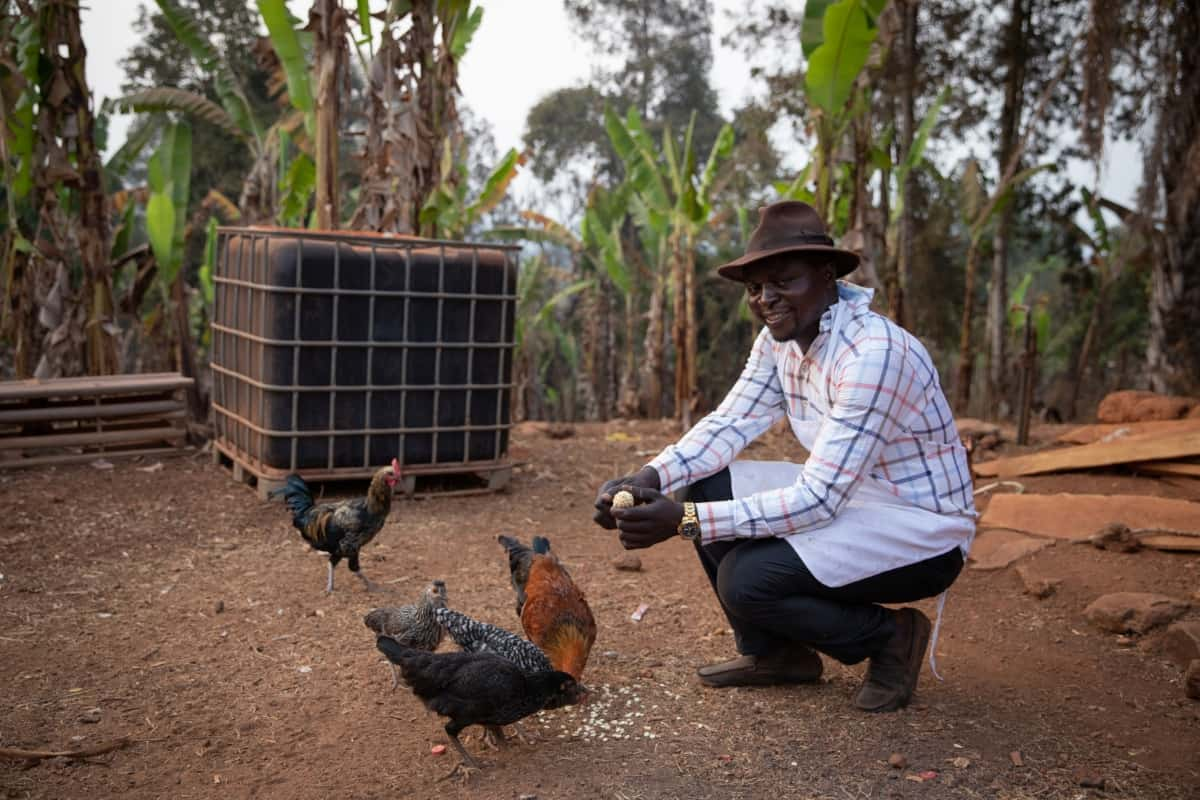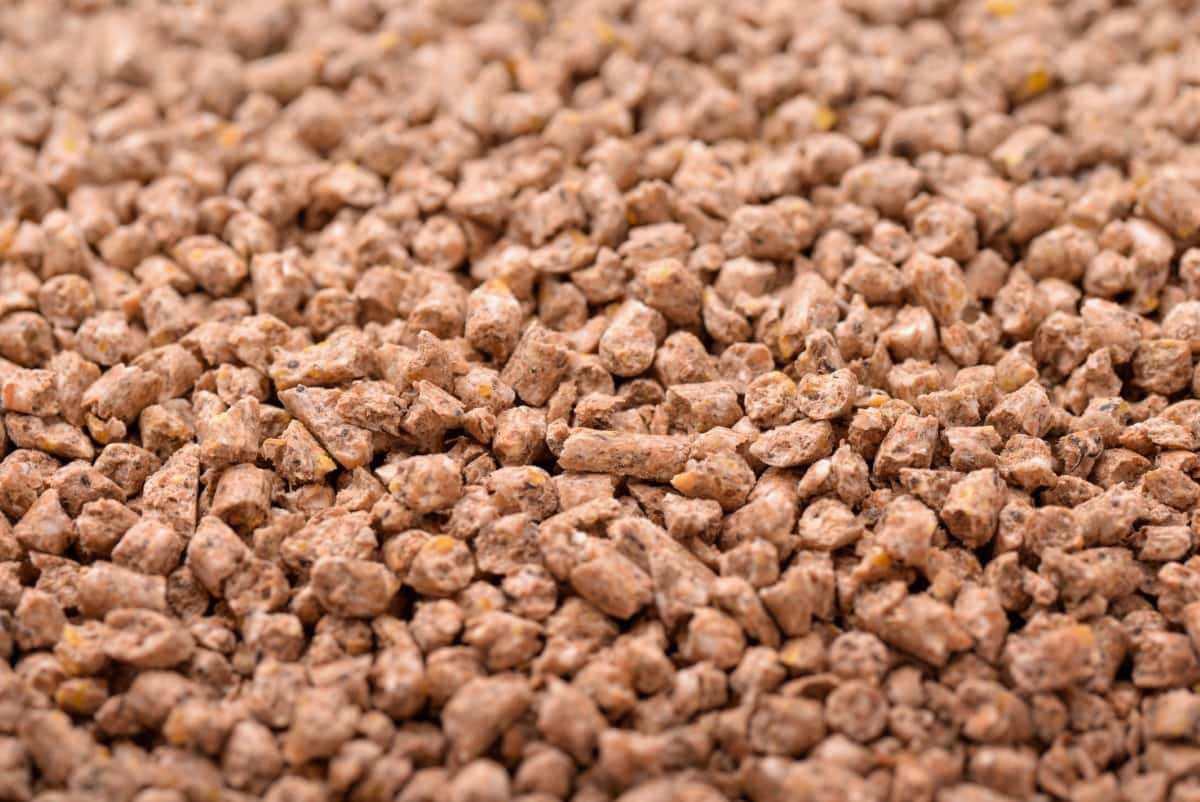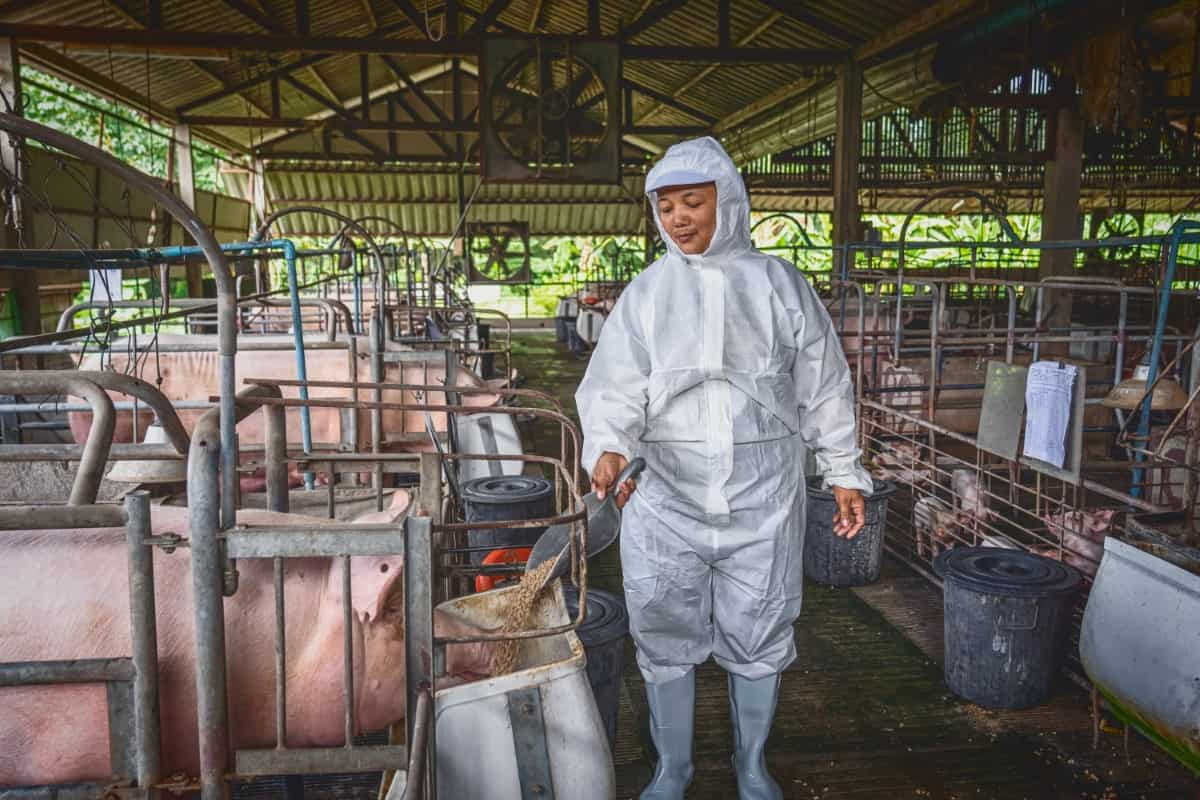For centuries, farmers have endeavored to understand and cater to the nutritional requirements of their livestock. The endeavor is propelled by the simple understanding that the quality of the products derived from the animals – whether meat, milk, or eggs – is primarily determined by the quality of feed the animals consume.
Therefore, exploring various types of feed ingredients and the best combination that promotes animal health and productivity is crucial. In this regard, this article focuses on the top ten main ingredients in farm animal feed, discussing each in detail, exploring their nutritional profiles, and highlighting their suitability for various types of livestock.
10 Main Ingredients in Farm Animal Feed
Organic Corn for Poultry Feed
First and foremost, let’s consider organic corn, an ingredient that prominently features in the poultry feed ingredients list. Corn is the primary cereal grain used in poultry diets worldwide due to its high nutritional value, energy content, and digestibility. When organic farming methods are employed, this translates into organic corn free of synthetic pesticides, genetically modified organisms (GMOs), and artificial fertilizers, making it a more healthful and sustainable choice.

Organic corn provides the necessary carbohydrates, which furnish energy, thereby contributing to the growth and development of poultry. Moreover, it also offers a good source of the essential vitamins and minerals poultry requires. However, it should be noted that while organic corn is an excellent energy source, it is low in protein and amino acids, necessitating the need for supplementary protein sources in poultry diets.
Non-GMO Soybean Meal for Livestock
Second, we move on to Non-GMO soybean meal, another highly popular and widely-used animal feed ingredient. Soybean meal is used in the diets of various livestock, including poultry, swine, and ruminants, primarily because of its high protein content. The protein in soybean meal is an excellent source of all the essential amino acids livestock require as one of the examples of concentrate feeds, non-GMO soybean meal is especially preferred by farmers and feed manufacturers who wish to avoid genetically modified ingredients.
Genetically modified organisms have been a contentious topic in the agricultural industry, and the demand for non-GMO products has been rising in recent years. In a nutshell, Non-GMO soybean meal not only meets the nutritional requirements of livestock but also satisfies the growing consumer demand for non-GMO animal products.
Wheat Bran Pellets for Cattle Nutrition
Third, wheat bran pellets have long been recognized for their significant contribution to cattle nutrition. Wheat bran is a byproduct of wheat milling, made from the outer layer of the wheat kernel. It’s packed with fiber, protein, and minerals, making it a great feed for cattle. Its high fiber helps keep cattle’s digestion and health in good shape.
In case you missed it: Get Your Flock Started: How to Set Up Incubator for Hatching Chicken Eggs

The pellets form, in particular, is easy to handle and incorporate into cattle diets, and it reduces waste, making it a practical choice for farmers. While wheat bran alone cannot satisfy all the nutritional needs of cattle, it serves as a valuable supplement that can enhance the nutritional quality of the overall diet.
Fishmeal for Aquaculture Feed
Fishmeal is vital for aquaculture feed because it contains lots of protein and has an outstanding amino acid profile. It also contains a significant level of omega-3 fatty acids, which are essential for fish health and growth. Moreover, fishmeal is a highly digestible feed ingredient, further contributing to its popularity in aquaculture.
However, it should be noted that the sustainability of fishmeal production is a significant concern, given the increasing pressure on wild fish stocks. Therefore, while fishmeal continues to play a vital role in aquaculture feed, exploring alternative, more sustainable sources of protein and nutrients is crucial.
Alfalfa Hay Cubes for Rabbit Diet
Fifth on the list is alfalfa hay cubes, a pivotal part of a rabbit’s diet. Known for its high protein, fiber, and calcium content, alfalfa is an excellent feed ingredient for rabbits, particularly young and pregnant ones that require additional nutrients. It aids in developing healthy bones and teeth, supports the immune system, and provides the necessary fiber for proper digestion.
The cubed alfalfa hay is convenient to handle and store, ensuring minimal waste and encouraging rabbits’ natural gnawing behavior, which is essential for dental health. Nevertheless, alfalfa hay should be fed judiciously to adult rabbits to prevent urinary issues due to its high calcium content.
Flaxseed Supplement for Chicken Feed
Next up is flaxseed, a supplement for chicken feed. Flaxseed provides abundant omega-3 fatty acids, specifically alpha-linolenic acid (ALA), which is crucial for the well-being and egg production of chickens. In addition, incorporating flaxseed into poultry feed can enhance the omega-3 fatty acid content in the eggs, making them more nutritionally beneficial for human consumption. Flaxseed also contains a good amount of protein and lignans, which possess antioxidant properties. It’s important to note that flaxseed should be ground before feeding chickens to ensure optimal nutrient absorption.
Barley Grain for Swine Nutrition
Barley grain is a primary feed ingredient in swine nutrition. It provides an excellent energy source, protein, and fiber, making it suitable for pig diets. Compared to other cereal grains, barley is noted for its superior content of essential amino acids. Moreover, the abundant fiber in it supports pig’s digestive system, enhancing their well-being and efficiency. While barley grain is a nutritious feed ingredient, it should be properly processed, usually by grinding or rolling, to break down the hull and enhance the digestibility for pigs.
In case you missed it: Sustainable Waste Management in Chicken Farming: Optimal Conditions Explained

Oats for Horse Feed and Digestion
Moving on, oats hold a long-standing reputation as a staple in horse feed. They are easy to digest, thanks to the hull providing bulk and roughage, aiding digestion and preventing problems such as colic. Furthermore, oats offer a good balance of energy, protein, and fiber necessary for the horse’s overall health and performance.
They also contain beta-glucans, which can help regulate blood sugar levels. Despite their benefits, oats should be fed with other ingredients or supplements to ensure a well-balanced diet, as they are low in certain essential nutrients like calcium and Vitamin A.
Sorghum Silage for Dairy Cow Diet
The ninth ingredient on our list is sorghum silage, which plays a significant role in a dairy cow diet. Sorghum is a hardy, drought-tolerant crop that produces highly nutritional silage for dairy cows. Rich in energy and fiber, sorghum silage helps maintain a healthy rumen environment, aiding digestion and nutrient absorption. It also contains notable amounts of protein, which contribute to milk production. However, like other feed ingredients, sorghum silage should be part of a balanced diet, complemented by other feeds and supplements to meet the full nutritional requirements of dairy cows.
Conclusion
While we have discussed the top ten main ingredients in farm animal feed in detail, it is vital to remember that the nutritional requirements of animals vary based on their species, age, stage of production, and health status.
- Feed Your Flock for Less: Top 10 Tips to Save on Chicken Feed
- Ultimate Guide to Ossabaw Island Hog: Breeding, Raising, Diet, and Care
- Hatching Answers: The Top 10 Reasons Your Chickens Aren’t Laying Eggs
- Eggs and Economics: Breaking Down the Cost of Raising Backyard Chickens
- Defend Your Greens: Proven Methods to Keep Iguanas Out of Your Garden
- Ultimate Guide to Cinnamon Queen Chicken: A Comprehensive Guide for Beginners
- Ultimate Guide to California Tan Chicken: Breeding, Raising, Diet, Egg-Production and Care
- Ultimate Guide to Marsh Daisy Chicken: Breeding, Raising, Diet, and Care
- 10 Types of Chicken Farming Businesses You Can Start for Profits